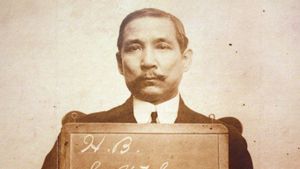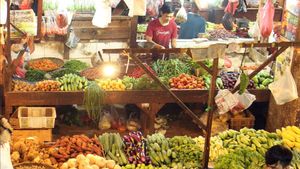
JAKARTA - The presence of Bisht is not only about Middle Eastern fashion. For the whole country of Arabia, this traditional robe is a cultural identity. The tradition, which is often embroidered with gold and silver threads, has even been present since time immemorial.
Alias, since Makkah became the center of Islamic culture. Bisht has spread throughout the country. Now, the traditional robe is used at every important moment. From marriage, shipping the king, to the moment when Lionel Messi lifted the 2022 World Cup of Qatar.
Muslims around the world consider Makkah as a holy land. All of this is in line with the running of the 5th Islamic Rukun: perform the pilgrimage, if possible. Hundreds of thousands of people from various ethnic groups, especially those in the Middle East, came to the holy land of Makkah.
The arrival was nothing but to complete, or perfect religious orders. Those who come must prepare physically, mentally, and also large funds. Because, the journey to Mecca is not short. Sometimes there are ethnic groups who are weeks away. Sometimes there are also months on the way.
This long distance makes all pilgrims do not immediately return to their respective hometowns. They want to deepen their knowledge of religion first in Makkah. Even though some of them then chose to settle down in Makkah to find a new life.
In fact, many live hard in Saudi Arabia. The rest, the pilgrims spread throughout the Middle East to find new luck. This situation makes many marriages between immigrants and local residents occur. Then, the culture between the two countries merged into everyday life.
The natives of Saudi Arabia actually use relative clothing from other ethnic groups. all of that boils down because during the 13 centuries the pilgrimage to go on a pilgrimage to Mecca has become the prima donna. Many ethnic groups come. However, not everyone returns to their respective countries. Many of them live living. Among others, people from Indonesia, Morocco, Central Asia, to West Africa. They also grow into cultural mixing.
In Asir Province, Saudi Arabia, for example. Some Saudi Arabian citizens actually have physical characteristics like Africans. There are also those who live not like Arabs or Africans. Likewise in several other provinces. all kinds of foreigners who come from all over the world then make it a cultural mix. This culture can be seen from the emergence of a variety of traditional clothing in Saudi Arabia," said Colbert C. Held and John Thomas Cummings in the book MIddle East Patterns: Places, People, and Politics (2013).
Instead of just living and settling, the presence of various ethnic groups in the Middle East also brings its culture. Even that culture has the flexibility of being adopted by local residents. Bisht, one of them. The traditional tradition based on its history is not purely from Saudi Arabia.
Bisht was initially considered to have been brought by one of the ethnic groups who performed the pilgrimage to Mecca. However, it was unable to identify with certainty who brought Bisht to Middle Eastern countries for the first time.
There are those who reveal the Bedouin who brought Bisht. There are also those who say the▁pengetahuans (Iran) spearheaded Bisht's presence in the Middle East. On the other hand, there is an opinion that says it is the Bangladeshi who brought Bisht.
Bisht was then adopted and slowly transformed into the identity of the Middle East nation. All of this was in line with the spread of ethnic groups who performed the pilgrimage and chose to settle in the Middle East: Saudi Arabia, Qatar, Bahrain, Egypt, Lebanon, Syria, and so on.
The traditional appearance has also become the fashion of all classes. Everyone has the opportunity to use it. From commoners to the King of Saudi Arabia. Its designation has also increased. Bisht, which was originally used to protect the body from dust and rain, became a mandatory accessories for celebrating important and historic days in the Middle East country. These include weddings, shipping the king, to the use of world soccer superstars to lift Qatar's 2022 World Cup trophy.
Bisht is made of very light, smooth, sometimes transparent material. The threads used are often gold or silver threads. This is known as Bisht bordir gold or silver.
"While walking, the robe is worn to cover the shoulders or sides. This allows for faster movement. Even though it is often considered impractical when combined with other Middle East ceremonial clothes," said Bruce Ingham and Nancy Lindisfarne-Tapper in the book Languages of Dress in the Middle East (2014).
The English, Chinese, Japanese, Arabic, and French versions are automatically generated by the AI. So there may still be inaccuracies in translating, please always see Indonesian as our main language. (system supported by DigitalSiber.id)









